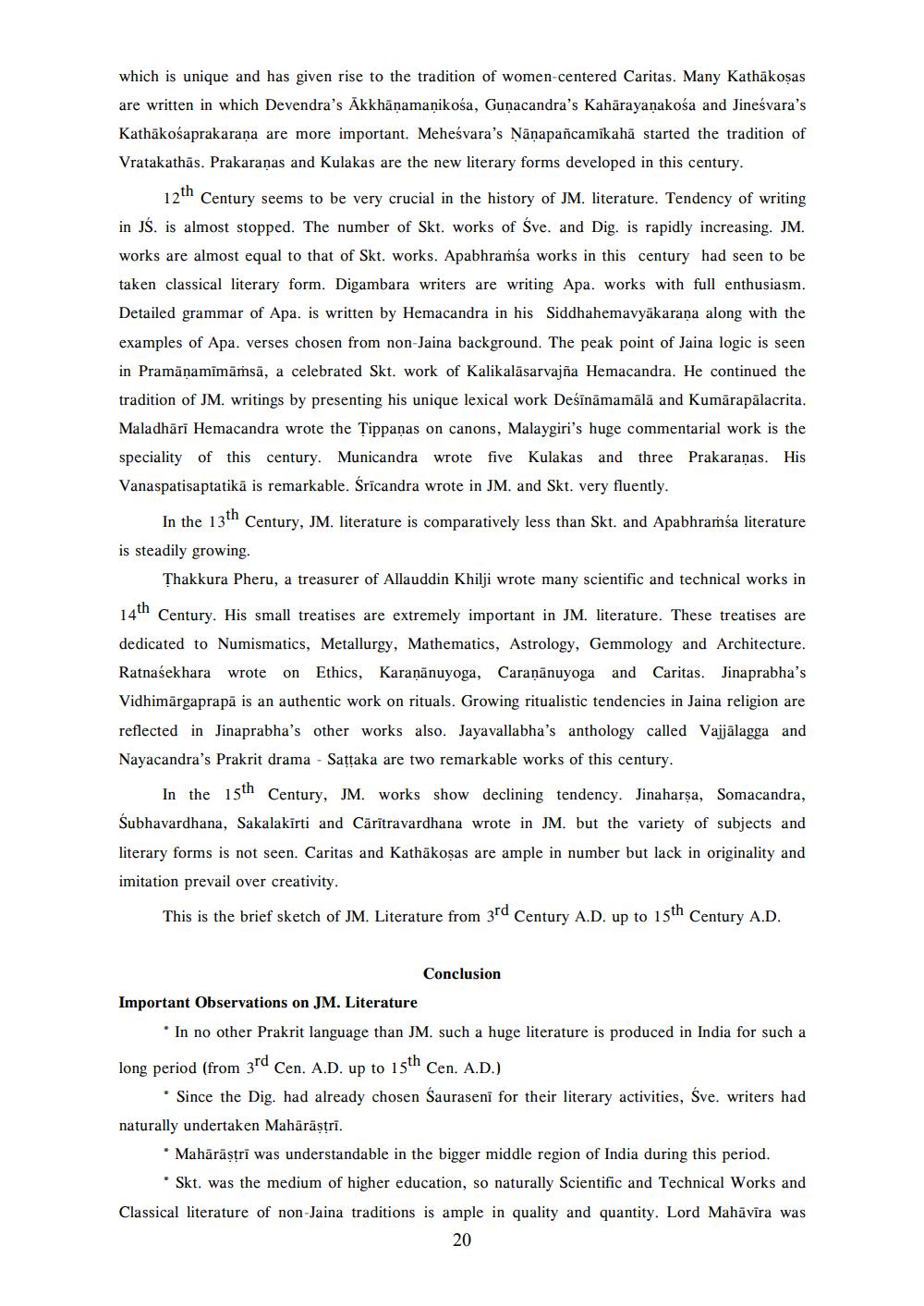________________
which is unique and has given rise to the tradition of women-centered Caritas. Many Kathākosas are written in which Devendra's Akkhānamaņikośa, Gunacandra's Kahārayanakosa and Jineśvara's Kathākośaprakarana are more important. Meheśvara's Nānapañcamikahā started the tradition of Vratakathās. Prakaranas and Kulakas are the new literary forms developed in this century.
12th Century seems to be very crucial in the history of JM. literature. Tendency of writing in JŚ. is almost stopped. The number of Skt. works of Sve. and Dig. is rapidly increasing. JM. works are almost equal to that of Skt. works. Apabhramsa works in this century had seen to be taken classical literary form. Digambara writers are writing Apa. works with full enthusiasm. Detailed grammar of Apa. is written by Hemacandra in his Siddhahemavyākarana along with the examples of Apa. verses chosen from non-Jaina background. The peak point of Jaina logic is seen in Pramāṇamīmāṁsā, a celebrated Skt. work of Kalikalāsarvajña Hemacandra. He continued the tradition of JM, writings by presenting his unique lexical work Deśīnāmamālā and Kumārapālacrita. Maladhāri Hemacandra wrote the Tippanas on canons, Malaygiri's huge commentarial work is the speciality of this century. Municandra wrote five Kulakas and three Prakaranas. His Vanaspatisaptatikā is remarkable. Sricandra wrote in JM. and Skt. very fluently.
In the 13th Century, JM. literature is comparatively less than Skt. and Apabhramsa literature is steadily growing.
Thakkura Pheru, a treasurer of Allauddin Khilji wrote many scientific and technical works in
14th century. His small treatises are extremely important in JM. literature. These treatises are dedicated to Numismatics, Metallurgy, Mathematics, Astrology, Gemmology and Architecture. Ratnasekhara wrote on Ethics, Karanānuyoga, Caranānuyoga and Caritas. Jinaprabha's Vidhimārgaprapā is an authentic work on rituals. Growing ritualistic tendencies in Jaina religion are reflected in Jinaprabha's other works also. Jayavallabha's anthology called Vajjālagga and Nayacandra's Prakrit drama - Sattaka are two remarkable works of this century.
In the 15th Century, JM. works show declining tendency. Jinaharşa, Somacandra, Subhavardhana, Sakalakirti and Cārītravardhana wrote in JM. but the variety of subjects and literary forms is not seen. Caritas and Kathākosas are ample in number but lack in originality and imitation prevail over creativity.
This is the brief sketch of JM. Literature from 3rd Century A.D. up to 15th Century A.D.
Conclusion
Important Observations on JM. Literature
In no other Prakrit language than JM. such a huge literature is produced in India for such a long period (from 3rd Cen. A.D. up to 15th Cen. A.D.)
Since the Dig. had already chosen Sauraseni for their literary activities, Sve. writers had naturally undertaken Mahārāstri.
Mahārāstrī was understandable in the bigger middle region of India during this period.
Skt. was the medium of higher education, so naturally Scientific and Technical Works and Classical literature of non-Jaina traditions is ample in quality and quantity. Lord Mahāvīra was
20




